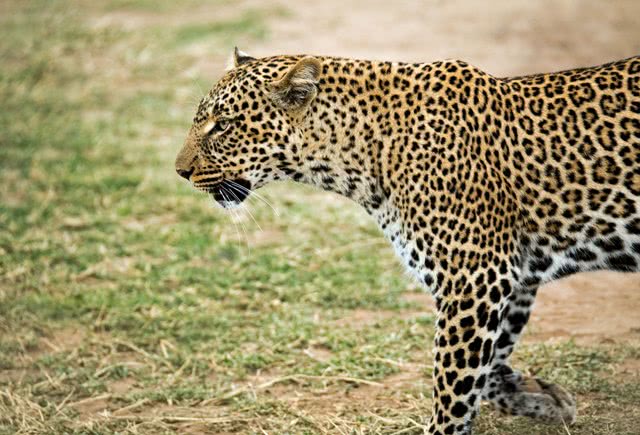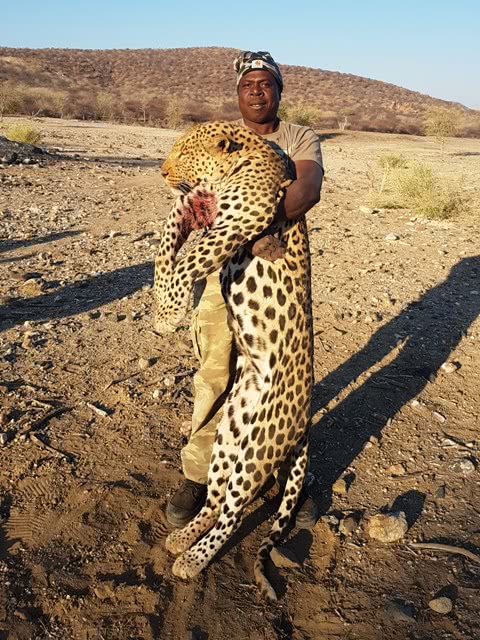leopard hunting

Introduction
Not many have seen a leopard in the wild, never mind hunted one. They are elusive creatures, but beautiful to behold with their black rosettes and long whiskers. Leopards are not endangered in Namibia, thus you may dare pit yourself against one of these magnificent creatures in its natural habitat. It won’t be an easy hunt, but very rewarding indeed.
Leopards have relatively short legs, a long body and large head; their body size can however vary, depending on the terrain and the prey available. They are covered in black rosettes on a light yellow/golden and white undercoat. This makes them blend into the grass and bushes extremely well, placing them among the stealthiest animals of all.
Anything from frogs and mice to antelope fall prey to these big cats, as they are opportunistic hunters. Since leopards are so adaptable, they are able to inhabit a wide variety of terrains, explaining their distribution from Africa to southern and eastern Asia.
Leopards are well known for their ability to climb trees with their prey locked in their jaws - they are extremely strong. Besides that they have excellent eyesight and hearing. Although there are well camouflaged, they are mainly nocturnal. This combined with their shy nature means they are rarely seen by humans. Leopards are usually solitary and hold and protect quite a large territory.
Hunting Leopards

Due to their secretive nature, a successful leopard hunt will require pre-baiting and bating during the hunt. The bait, in the form of fresh meat, is placed in a tree, whilst the hunter lies in wait in a blind less than 100 meters away. This is usually done at dusk and if a leopard comes, it will be just before total darkness sets in.
It might well be that the first time you see the Leopard will be when he is at the bait, although other smaller animals will notify you of his imminent arrival. Few other hunts will give you such excitement – your heart rate will instantly sky-rocket.
Leopard Hunt Equipment
Quality optics with strong light gathering capabilities is paramount. Furthermore, it will require great skill to aim and fire without making even the slightest unnatural sound, as this would alert the leopard.
Any medium caliber rifle (i.e. .300, .308, .270 etc) will suffice and quick-expanding ammunition that will deliver sufficient hydrostatic shock is highly recommended. Good shot placement is vital.
Going after a wounded Leopard is an experience many would rather not make, as wounded Leopards are usually hell bent on revenge. A leopard most certainly holds the advantage of surprise, because of their superb camouflage. You might literally be about to step on it before it charges.

